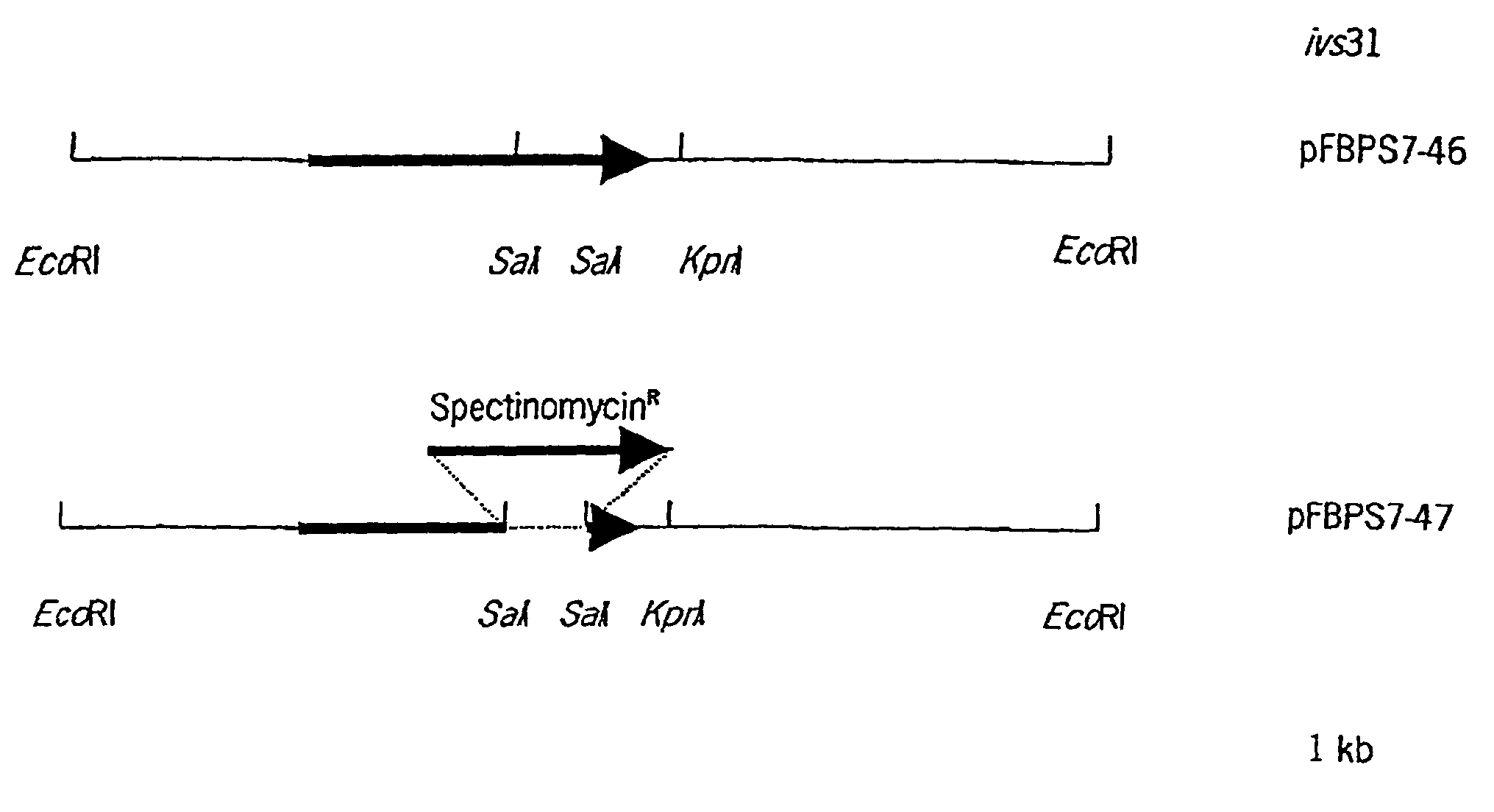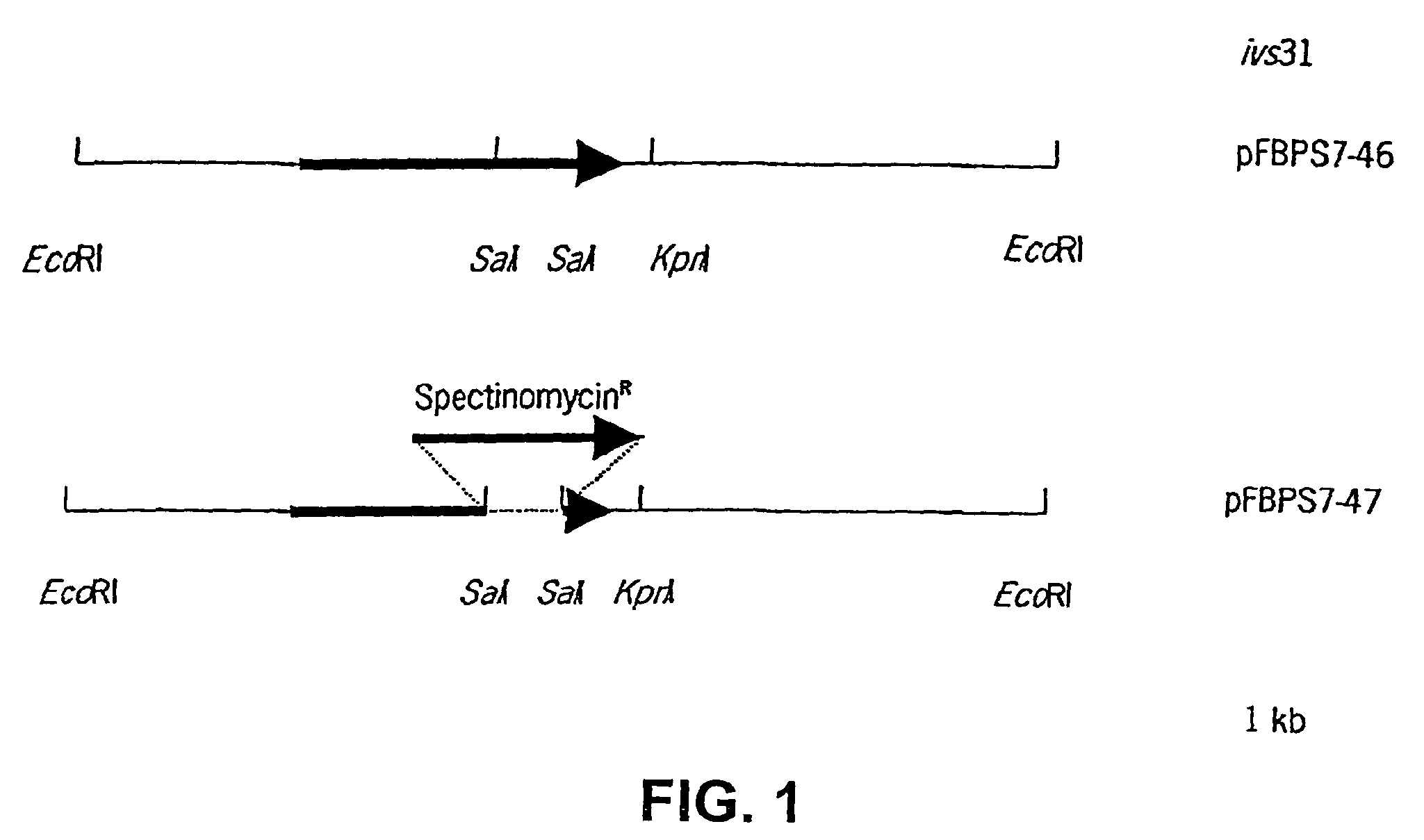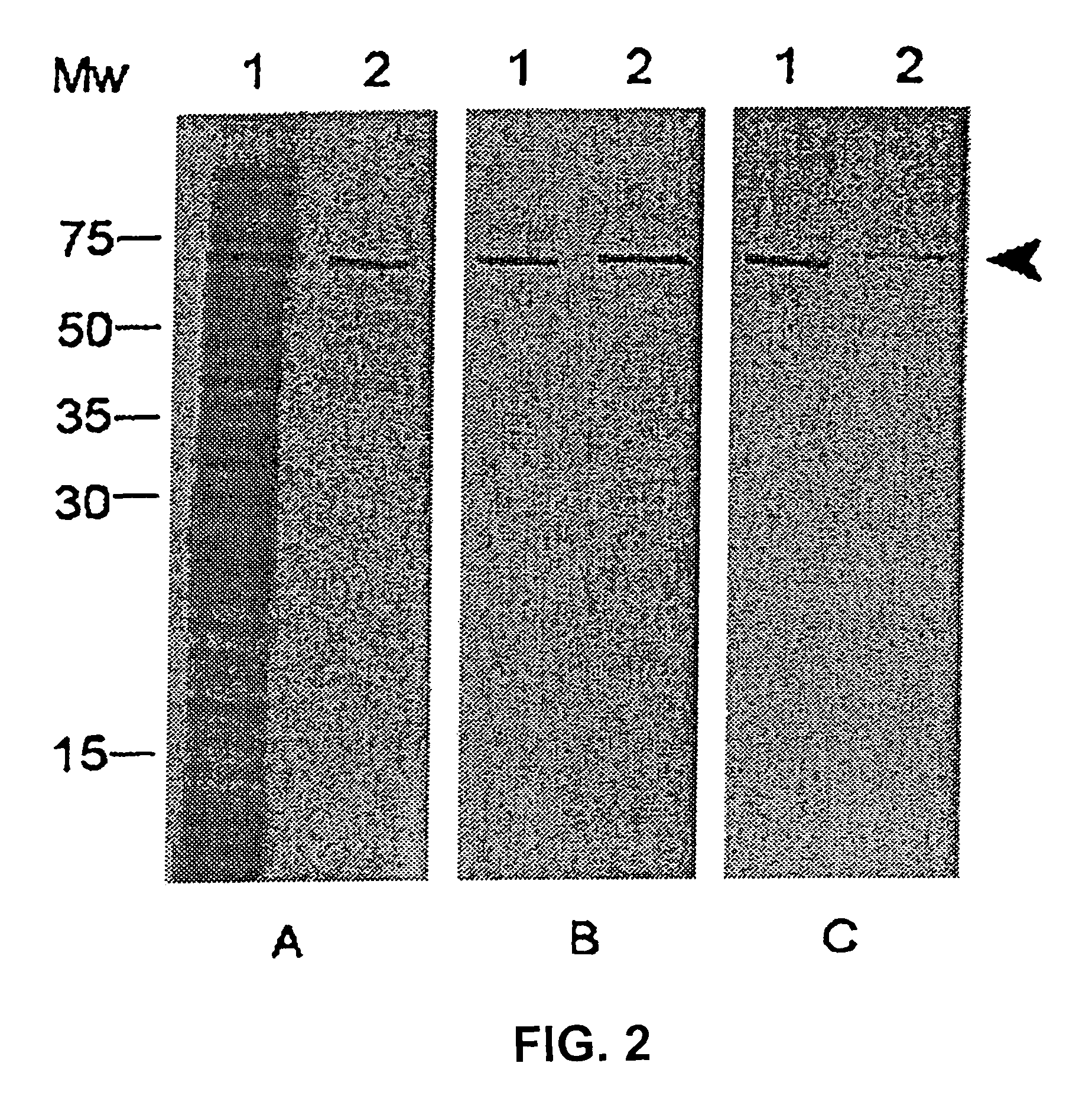Environmentally regulated genes of Streptococcus suis
a technology of streptococcal and environment-regulated genes, which is applied in the field of detection of streptococcal virulence markers, can solve the problems of human infants being susceptible, fatal consequences, and the precise role of these protein components in the pathogenesis of the disease, and achieve the effect of modulating virulence and modulating virulen
- Summary
- Abstract
- Description
- Claims
- Application Information
AI Technical Summary
Benefits of technology
Problems solved by technology
Method used
Image
Examples
Embodiment Construction
[0034]Streptococcus suis is an important cause of meningitis, septicemia, arthritis and sudden death in young pigs (Clifton-Haclley, 1983; Vecht et al., 1985). It can also cause meningitis in man (Arends and Zanen, 1988). Attempts to control the disease are still hampered by the lack of sufficient knowledge about the pathogenesis of the disease, the lack of effective vaccines and sensitive diagnostic methods. To meet these shortages, it is necessary to identify the genes that are involved in the pathogenic process. So far, only a limited number of S. suis genes are known (Smith et al., 1992; Smith et al., 1993; Serhir et al., 1997; Segers et al., 1998; Smith et al., 1999; and accession nos. AF106927, Z95920 and A57222) and of these, only a few are putatively involved in virulence (Smith et al., 1992; Smith et al., 1993; Jacobs et al., 1994; Gottschalk et al., 1995; Segers et al., 1998; Smith et al., 1999). Previously, putative virulence factors have been identified after growth of t...
PUM
| Property | Measurement | Unit |
|---|---|---|
| pH | aaaaa | aaaaa |
| pH | aaaaa | aaaaa |
| pH | aaaaa | aaaaa |
Abstract
Description
Claims
Application Information
 Login to View More
Login to View More - R&D
- Intellectual Property
- Life Sciences
- Materials
- Tech Scout
- Unparalleled Data Quality
- Higher Quality Content
- 60% Fewer Hallucinations
Browse by: Latest US Patents, China's latest patents, Technical Efficacy Thesaurus, Application Domain, Technology Topic, Popular Technical Reports.
© 2025 PatSnap. All rights reserved.Legal|Privacy policy|Modern Slavery Act Transparency Statement|Sitemap|About US| Contact US: help@patsnap.com



